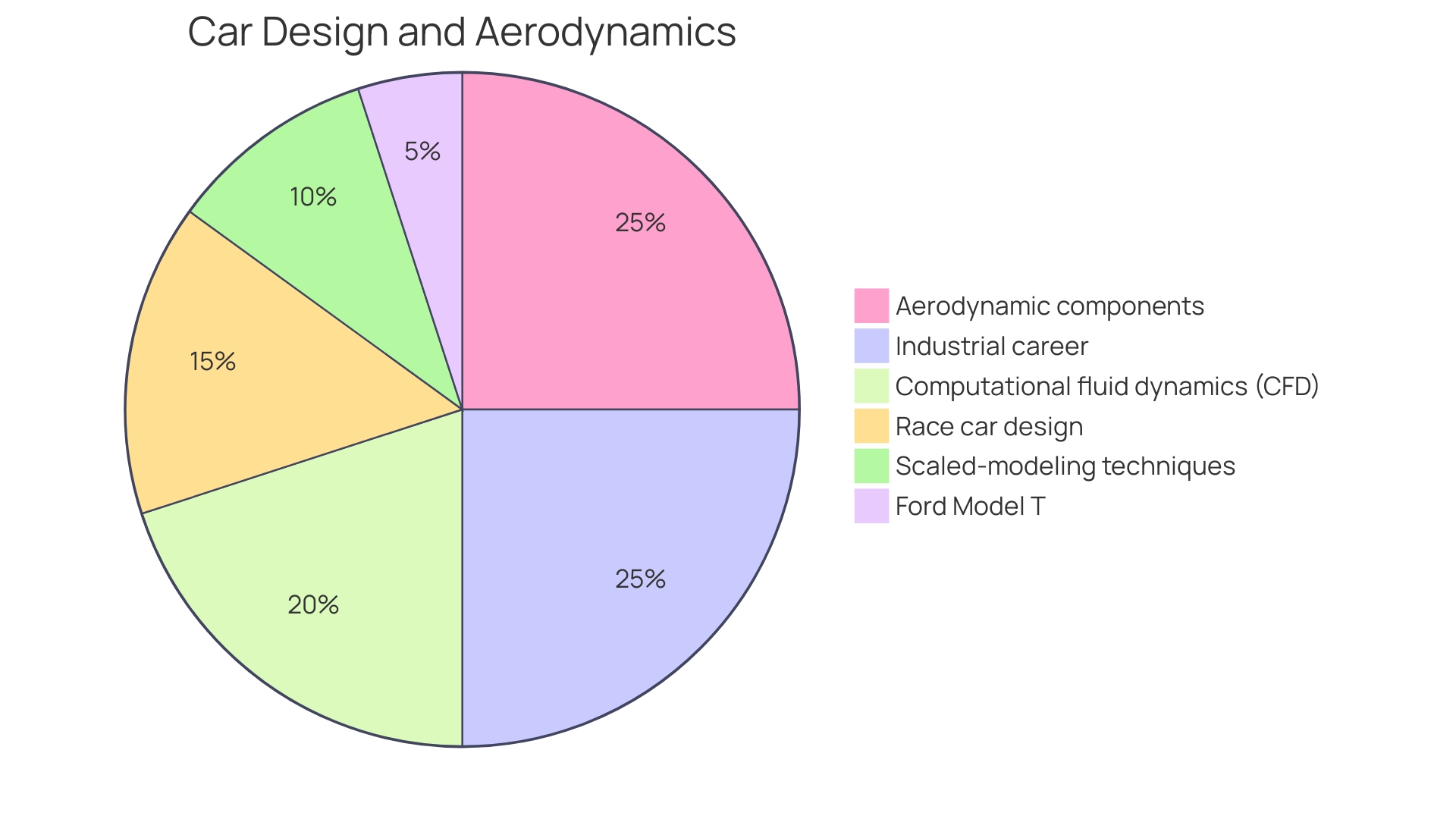Introduction
Diesel engines have long been the workhorses of various industries, powering vehicles and machinery essential for transportation, construction, and agriculture. The fuel efficiency of these engines is a crucial factor that impacts not only operational costs but also environmental sustainability and overall performance. Advancements in fuel efficiency have come a long way, with companies like Bosch leading the charge by combining engineering expertise with digital technologies.
For instance, Bosch's solid oxide fuel cell system boasts an impressive electrical efficiency of 60 percent, further optimized by digital twins that monitor and enhance performance throughout the product's lifecycle. Additionally, recent innovations, such as Weichai Power's diesel engine with an intrinsic thermal efficiency of 53.09 percent, represent significant leaps forward in diesel technology. In the consumer automobile industry, technologies like turbochargers and variable valve timing systems have become staples, allowing for smaller engines without compromising power and optimizing efficiency based on driving conditions.
The inherent energy density of diesel fuel also contributes to the efficiency of diesel engines. However, maintaining efficiency requires diligent engine care, such as regular oil changes. Modern diesel engines have made remarkable strides in reliability, power, and fuel efficiency, producing between 10 and 20 times more power per liter compared to engines from a century ago.
As the quest for optimal fuel efficiency continues, a combination of advanced engineering, digital monitoring, and proper maintenance will play a vital role in enhancing performance and sustainability in the renewable fuels industry.
The Importance of Fuel Efficiency for Diesel Engines
Diesel motors are crucial to the foundation of industry, propelling a variety of vehicles and machinery essential for sectors such as transportation, construction, and agriculture. The fuel economy of a combustion motor, the effectiveness of converting fuel into productive output, is a crucial element affecting not just the operating expenses but also the ecological impact and functionality of these motors.
Fuel advancements have made significant progress since the diesel engine's beginning. Companies like Bosch are leading the way, blending their engineering knowledge with digital technologies to improve energy effectiveness. Bosch's solid oxide cell system showcases such innovation, with an impressive electrical effectiveness of 60 percent, and further enhanced by digital twins that observe and enhance performance throughout the product's lifespan.
Furthermore, fuel efficiency is being transformed in different ways; consider, for example, the recent introduction of a combustion motor by Weichai Power at the World Congress on Internal Combustion Engines, showcasing an inherent thermal efficiency of 53.09 percent. This milestone represents a significant leap forward in diesel technology.
In the consumer automobile industry, turbochargers are a commonly adopted technology that enables the use of smaller machinery without compromising power. They make use of high-pressure air pushed into combustion chambers, maximizing the energy from each drop of substance. Moreover, variable valve timing systems have become a fundamental component, enabling real-time adjustments to the intake and exhaust timings of the motor, optimizing performance according to driving conditions.
Examining the underlying disparities between diesel and gasoline shows that diesel fuel has a higher energy content per gallon, which inherently enhances the performance of diesel motors. Nevertheless, preserving optimal performance also necessitates conscientious motor maintenance. For instance, motor oil - essential for lubrication - must be regularly replaced to avoid heightened friction and wear on motor components.
Considering these technological advancements and maintenance approaches, contemporary motors powered by compression ignition have accomplished noteworthy enhancements in dependability, performance, and fuel economy. They now produce between 10 and 20 times more power per liter compared to machines from a century ago, like the Model T, which had a power ratio of less than 7 hp per liter. Modern combustion motors can easily surpass 100 hp per liter, demonstrating the remarkable advancement of engine technology.
As we continue to search for methods to enhance fuel efficiency in diesel engines, it is evident that the incorporation of advanced engineering, digital monitoring, and proper maintenance will have a crucial impact on improving both performance and sustainability.
Technological Innovations in Diesel Fuel Efficiency
Diesel motors have experienced a revolutionary change over the previous century, progressing from the basic configurations of the early 1900s to the exceptionally efficient systems we witness today. The Model T, with its 2.9-liter motor producing a mere 20 horsepower, is a far cry from the modern engines that boast over 100 horsepower per liter. This significant improvement in effectiveness and power is evidence of the creativity and ongoing enhancement in motor technologies.
One pivotal advancement is the turbocharger, an ingenious device that maximizes power while maintaining efficiency. By harnessing the energy of exhaust gases, turbochargers spin a turbine connected to a compressor, which then forces more air—and consequently more oxygen—into the combustion chamber. The outcome is an increase in power without requiring a bigger motor, thereby preserving fuel efficiency.
Another revolutionary development is variable valve timing (VVT). Through precise adjustments to the valve opening times during the engine's cycle, VVT systems optimize the air-fuel mixture entering the engine. This not only improves performance when the demand is high but also greatly enhances effectiveness during low-power requirements. Manufacturers have developed exclusive VVT technologies, like Honda's VTEC and BMW's VANOS, but regardless of the naming, the objective remains unchanged: achieving a harmonious trade-off between power and effectiveness.
Exhaust Gas Recirculation (EGR) systems also have a vital function in contemporary diesel machines. By redirecting a portion of the exhaust from a motor back into the combustion chamber, EGR decreases nitrogen oxide emissions and enhances the overall performance of the machinery.
These innovations are not just about boosting performance; they are also critically important for environmental considerations. As pointed out by the National Renewable Energy Laboratory (NREL), the shift to renewable energy and energy effectiveness technologies is crucial. The incorporation of advanced motor technologies aligns with this vision by reducing emissions and enhancing energy efficiency, thereby contributing to a more sustainable future.
As the industry continues to evolve, these technological enhancements offer a pathway to address the dual challenge of meeting performance demands and environmental responsibilities. For operators, the adoption of these innovations signifies a commitment to operational excellence and environmental stewardship.

PHINIA's CR350 System: A Breakthrough in Emissions Reduction and Fuel Efficiency
As the sustainable energy sector progresses, PHINIA's CR350 system distinguishes itself as a groundbreaking remedy to the obstacles of emissions reduction and energy efficiency in combustion motors. The CR350's advanced control algorithms and unique combustion process are engineered to optimize performance, significantly reducing emissions while improving fuel efficiency, which is crucial as heavy-duty power units remain prevalent in industries such as agriculture, construction, and maritime operations.
PHINIA, a titan in the field with over a century of manufacturing prowess, has recognized the need to adapt to the shifting landscape of the diesel engine market. Their significant investment in new machinery has drastically increased production uptime from 30% to almost 100%, a testament to their dedication to innovation and their substantial investment in hydrogen combustion technology, indicating a forward-thinking approach towards alternative energy sources.
The relevance of the CR350 system is further underscored by recent legislative developments. The European Union, through its revised CO2 emissions standards for heavy-duty vehicles (HDVs), aims to drastically reduce the climate impact of this sector, setting ambitious emission reduction targets for 2030, 2035, and 2040. This regulatory push towards a greener transportation sector enhances the importance of advanced systems like the CR350 that help achieve these goals.
Real-world applications of the CR350 system demonstrate its capability to meet the stringent demands of the industry while paving the way for responsible and sustainable connectivity. As PHINIA continues to develop solutions that cater to both current and future needs, their products contribute to the larger narrative of sustainable innovation, ensuring that the company remains at the forefront of the renewable energy industry.
Aerodynamic Devices for Fuel Savings
Aerodynamics, the study of air flow around objects, is at the forefront of automotive design, shaping vehicles to be as fuel-efficient and high-performing as possible. Wind deflectors, side skirts, and streamlined body designs are not merely aesthetic enhancements; they are the result of meticulous engineering aimed at reducing drag. Computational fluid dynamics (CFD), a cutting-edge simulation technology, allows designers to predict how air particles will interact with vehicles, leading to designs that can significantly decrease air resistance.
The automotive industry's journey from the utilitarian designs of the early 1900s to today's sleek models illustrates the evolution of aerodynamics. The Ford Model T revolutionized mass car production, and since then, every contour of a car has been refined to enhance the utilization of resources. This has become even more crucial with the stringent Corporate Average Fuel Economy (CAFE) standards, which now aim for a fleet-wide average of 58 miles per gallon (mpg) by 2032.
In the world of racing, aerodynamics is a critical factor in the performance equation. Race cars are equipped with aerodynamic components like splitters and rear wings to generate downforce, enhancing grip and stability. These elements are meticulously designed to ensure the car remains adhered to the track, allowing for greater speed and agility.
Furthermore, the aerodynamic coefficient of drag (Cd) is a crucial metric used by engineers to measure a vehicle's effectiveness. A lower Cd indicates a more aerodynamic vehicle, resulting in better economy, higher top speeds, and reduced emissions. This understanding has led to a paradigm shift in car design, steering away from boxy shapes to more streamlined forms that glide through the air with less resistance.
As we confront climate challenges, the transport sector is under scrutiny for its environmental impact. With the rise of electric vehicles, aerodynamics will play a pivotal role in maximizing range and efficiency, potentially signaling the decline of less efficient, traditionally shaped SUVs.
Historical insights and recent developments underscore the importance of aerodynamics in automotive design, with real-world benefits for fuel economy and performance. By integrating advanced aerodynamic devices into vehicle designs, manufacturers are not only meeting regulatory demands but also paving the way for the next generation of efficient transportation.

Conclusion
In conclusion, fuel efficiency is crucial for diesel engines, impacting operational costs, environmental sustainability, and overall performance. Companies like Bosch are leading the way with innovative technologies, pushing the boundaries of energy efficiency. Technological advancements like turbochargers and variable valve timing systems optimize efficiency without sacrificing power.
Maintaining engine care is essential for efficiency. Modern diesel engines have made remarkable strides, producing 10 to 20 times more power per liter compared to a century ago. Advanced engineering, digital monitoring, and maintenance practices play a vital role in enhancing performance and sustainability.
Innovations like turbochargers, variable valve timing systems, and exhaust gas recirculation contribute to performance and environmental considerations. PHINIA's CR350 system is an innovative solution for emissions reduction and fuel efficiency in diesel engines, aligning with emission reduction goals. Aerodynamics play a crucial role in maximizing fuel efficiency and performance.
By embracing advancements in engineering, monitoring, maintenance, and aerodynamic design, we can achieve improved performance, sustainability, and environmental stewardship in the diesel engine industry. The continuous pursuit of fuel efficiency requires integrating innovative technologies, maintenance practices, and aerodynamic enhancements.




